-

 Frank Dell's experience as a Second World War pilot with the Royal Air Force's Light Night Striking Force took an even more dramatic turn when his Mosquito was shot down over Germany on the night of 14/15 October 1944. Frank recounts his escape from the disintegrating aircraft, his descent by parachute, and how, battered and bruised, he finds himself in a field adjacent to a German V2 rocket launch pad. Determined to avoid capture Frank crosses Nazi Germany and finds refuge in Holland with a Dutch Resistance group. A schoolboy when the conflict broke out, Frank Dell's extraordinary war takes him from a Home Guard unit defending the English coast against enemy invasion in 1940, to a tragic incident leading to the execution of Dutch civilians only weeks before the end of the hostilities. Frank's observant eye gives insight into what it is like to train and fly operationally with RAF Bomber Command, followed by the even greater challenges he confronts as he narrowly escapes capture while on the run from the Germans.
Frank Dell's experience as a Second World War pilot with the Royal Air Force's Light Night Striking Force took an even more dramatic turn when his Mosquito was shot down over Germany on the night of 14/15 October 1944. Frank recounts his escape from the disintegrating aircraft, his descent by parachute, and how, battered and bruised, he finds himself in a field adjacent to a German V2 rocket launch pad. Determined to avoid capture Frank crosses Nazi Germany and finds refuge in Holland with a Dutch Resistance group. A schoolboy when the conflict broke out, Frank Dell's extraordinary war takes him from a Home Guard unit defending the English coast against enemy invasion in 1940, to a tragic incident leading to the execution of Dutch civilians only weeks before the end of the hostilities. Frank's observant eye gives insight into what it is like to train and fly operationally with RAF Bomber Command, followed by the even greater challenges he confronts as he narrowly escapes capture while on the run from the Germans. -

Munda Trail: Eric Hammel
$10.00The Solomon Island archipelago stretches in a roughly east-west direction from New Guinea to San Cristobal. For the Imperial Japanese forces in 1942, it was a natural highway into the South Pacific. When checked at Guadalcanal, these forces realized they had moved east too quickly, and that their defeat was caused in part by inadequate air bases between the front and their head-quarters at Rabaul, more than six hundred miles away. As the last Japanese battalions were wrecking themselves against the Marine defensive perimeter on Guadalcanal, the decision was made to build the Munda airfield on New Georgia, right in the middle of the Solomons chain. This is the dramatic, harrowing story of green American soldiers encountering for the first time impenetrable swamps, solid rain forests, invisible coconut-log pillboxes, tenacious snipers tied into trees, torren-tial tropical rains, counterattack by enemy aircraft and naval guns, and the logistical nightmare of living and moving in endless mud. -
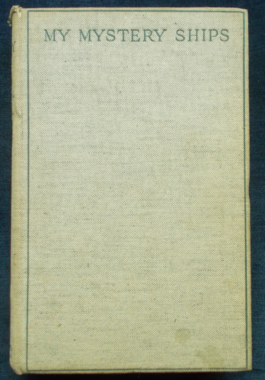 World War I saw a significant and tragic change to the prosecution of war. Allied passenger and merchant ships were blatantly attacked by the enemy, resulting in dreadful civilian losses. The mystery ships were then created - they were disguised as peaceful merchant ships, but which were equipped with guns hidden until a few seconds before opening fire on enemy submarines. They cruised on the trade routes, hoping to encounter enemy submarines and attract them to attack, and when the submarine came to the surface, bombard her with heavy armament. The guns had to be accurate, necessitating rigid drill and discipline - one officer or man making an error would give the show away and risk the ship and crew. This book, first published in 1928, is the first to tell the real story of life on board and the stories of attacks on and by submarines as well as describing the life on board - the discomforts, difficulties and dangers of this method of fighting back. There was also an explanation of the attraction this form of service has for men who were independent and courageous with a strict sense of moral duty. The crew were constantly on alert: one false step could lead to the ship being torpedoed, with those left to try and save themselves or being taken prisoner; discipline and readiness for immediate action were strict from the moment of leaving harbour until safe within the harbour on return. Campbell served on the mystery ships from 2015 to 2017, beginning as a Lieutenant-Commander R.N., and ending that part of his naval career as a Captain R.N. with a V.C. and three D.S.O.s. A little-known and over-looked part of war history. With illustrations by Lieutenant J.E. Broome, R.N.
World War I saw a significant and tragic change to the prosecution of war. Allied passenger and merchant ships were blatantly attacked by the enemy, resulting in dreadful civilian losses. The mystery ships were then created - they were disguised as peaceful merchant ships, but which were equipped with guns hidden until a few seconds before opening fire on enemy submarines. They cruised on the trade routes, hoping to encounter enemy submarines and attract them to attack, and when the submarine came to the surface, bombard her with heavy armament. The guns had to be accurate, necessitating rigid drill and discipline - one officer or man making an error would give the show away and risk the ship and crew. This book, first published in 1928, is the first to tell the real story of life on board and the stories of attacks on and by submarines as well as describing the life on board - the discomforts, difficulties and dangers of this method of fighting back. There was also an explanation of the attraction this form of service has for men who were independent and courageous with a strict sense of moral duty. The crew were constantly on alert: one false step could lead to the ship being torpedoed, with those left to try and save themselves or being taken prisoner; discipline and readiness for immediate action were strict from the moment of leaving harbour until safe within the harbour on return. Campbell served on the mystery ships from 2015 to 2017, beginning as a Lieutenant-Commander R.N., and ending that part of his naval career as a Captain R.N. with a V.C. and three D.S.O.s. A little-known and over-looked part of war history. With illustrations by Lieutenant J.E. Broome, R.N. -
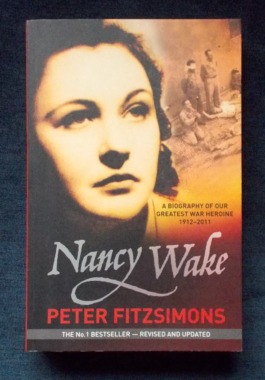
Nancy Wake: Peter Fitzsimons
$15.00In the early 1930s, Nancy Wake was a young woman enjoying a bohemian life in Paris. By the end of the Second World War, she was the Gestapo's most wanted person. As a naïve, young journalist, Nancy witnessed a horrific scene of Nazi violence in a Viennese street. From that moment, she declared that she would do everything in her power to rid Europe of the Nazis. What began as a courier job here and there became a highly successful escape network for Allied soldiers, perfectly camouflaged by Nancy's high-society life in Marseille. Her network was soon so successful - and so notorious - that she was forced to flee France to escape the Gestapo, who had dubbed her "the white mouse" for her knack of slipping through its traps. But Nancy was a passionate enemy of the Nazis and refused to stay away. Supplying weapons and training members of a powerful underground fighting force, organising Allied parachute drops, cycling four hundred kilometres across a mountain range to find a new transmitting radio - nothing seemed too difficult in her fight against the Nazis.Illustrated with black and white photographs. -
 New Zealand's most famous RAF pilot saw action from the Munich Crisis to the invasion of France in 1944. Deere experienced the drama of the early days of the Battle of Britain while serving with Spitfire squadrons based at Hornchurch and Manston, and his compelling story tells of the successes and frustrations of those critical weeks. Deere's nine lives are the accounts of his fantastic luck in escaping from seemingly impossible situations. During the Battle of Britain he parachuted from stricken aircraft on three occasions and once was blown up by a bomb while taking off from Hornchurch during an attack on the airfield. In March 1943 Deere was appointed Wing Commander of the famous Biggin Hill Wing and by the end of the war, his distinguished 'score' was destroyed - twenty-two; 'probables' - ten and damaged - eighteen. Illustrated with black and white photographs.
New Zealand's most famous RAF pilot saw action from the Munich Crisis to the invasion of France in 1944. Deere experienced the drama of the early days of the Battle of Britain while serving with Spitfire squadrons based at Hornchurch and Manston, and his compelling story tells of the successes and frustrations of those critical weeks. Deere's nine lives are the accounts of his fantastic luck in escaping from seemingly impossible situations. During the Battle of Britain he parachuted from stricken aircraft on three occasions and once was blown up by a bomb while taking off from Hornchurch during an attack on the airfield. In March 1943 Deere was appointed Wing Commander of the famous Biggin Hill Wing and by the end of the war, his distinguished 'score' was destroyed - twenty-two; 'probables' - ten and damaged - eighteen. Illustrated with black and white photographs. -
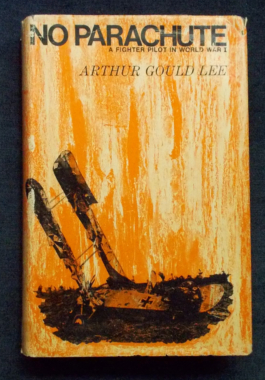 Arthur Gould Lee, who retired as an RAF air vice marshal, had the privilege of recording his feelings and actions during World War I in his letters home and what's more, his letters survived. A courageous 22-year-old, devoted to duty and well aware of the hazards he faced on the Western Front, Lee was more mature than most of his colleagues, in part by virtue of being married and in part because he had had the good fortune to have crashed during training, allowing him to log more hours of flight training than the average replacement pilot. He didn’t like the fact that the Germans had superior aircraft, and noted the qualitative differences in opposing Albatross D.Is, D.IIs and D.IIIs, the latter dubbed the “V-strutter” and carrying two machine guns to the single one carried by the Sopwith Pup. He writes about flying through a shell-laden sky, vulnerable to bullets from above and below. He never forgot the RFC's needless sacrifices and examines the failure of the Army High Command to provide efficient planes until mid-1917 and parachutes throughout the entire war. With black and white photos.
Arthur Gould Lee, who retired as an RAF air vice marshal, had the privilege of recording his feelings and actions during World War I in his letters home and what's more, his letters survived. A courageous 22-year-old, devoted to duty and well aware of the hazards he faced on the Western Front, Lee was more mature than most of his colleagues, in part by virtue of being married and in part because he had had the good fortune to have crashed during training, allowing him to log more hours of flight training than the average replacement pilot. He didn’t like the fact that the Germans had superior aircraft, and noted the qualitative differences in opposing Albatross D.Is, D.IIs and D.IIIs, the latter dubbed the “V-strutter” and carrying two machine guns to the single one carried by the Sopwith Pup. He writes about flying through a shell-laden sky, vulnerable to bullets from above and below. He never forgot the RFC's needless sacrifices and examines the failure of the Army High Command to provide efficient planes until mid-1917 and parachutes throughout the entire war. With black and white photos. -
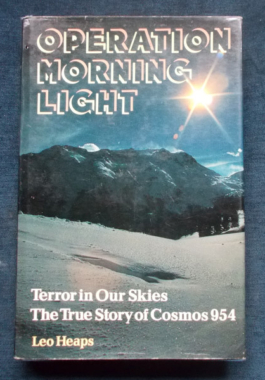 December, 1977: an urgent messaged was flashed from NORAD that a Soviet satellite had begun to malfunction by flipping out of its orbit - and was going to crash into the earth's surface. What followed was a real-life science fiction nightmare as scientists and politicians from America, Canada and the Soviet Union became embroiled in a terrifying tangle of intrigue and guessing games. Now the full story of this nightmare is told.
December, 1977: an urgent messaged was flashed from NORAD that a Soviet satellite had begun to malfunction by flipping out of its orbit - and was going to crash into the earth's surface. What followed was a real-life science fiction nightmare as scientists and politicians from America, Canada and the Soviet Union became embroiled in a terrifying tangle of intrigue and guessing games. Now the full story of this nightmare is told. -
 The in-depth inside story of the victory in Africa and Europe by Montgomery's Chief-of-Staff. This is not just a re-telling of the battles and campaigns de Guingand fought with Montgomery, the Eighth Army and the 21st Army Group; it is also an insight into what it takes to get armies equipped and in place to achieve those victories as well as an evaluation of some of the personalities of the leadership of the Western Allies through defeat onward to victory.
The in-depth inside story of the victory in Africa and Europe by Montgomery's Chief-of-Staff. This is not just a re-telling of the battles and campaigns de Guingand fought with Montgomery, the Eighth Army and the 21st Army Group; it is also an insight into what it takes to get armies equipped and in place to achieve those victories as well as an evaluation of some of the personalities of the leadership of the Western Allies through defeat onward to victory. -

Being Reports on Various New Zealand Towns and Country Places and On Some of the Doings of Their People as Described in Korero, Magazine of the Army Education Welfare Service. Korero was an illustrated troop magazine, a fortnightly bulletin that contained articles, sketches and verse of interest to members of the Armed Forces. Contributions were sought from individuals within the New Zealand Armed Forces and were intended to give New Zealanders serving overseas a brief survey of the towns and districts they had left. A maximum of £3 in canteen orders was made as payment. The surveys are not profound social studies nor are they superficial - but they are observant and sympathetic. Drawings were used rather than photographs as photographs did not reproduce well on newsprint. Illustrated with excellent black and white sketches. Korero is Maori for talk, discussion or meeting.
-
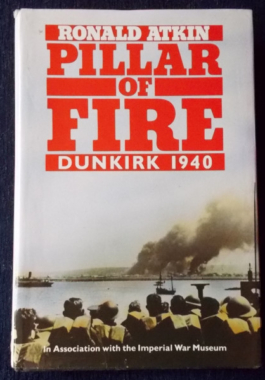
Pillar Of Fire: Ronald Atkin
$15.00In the space of three and a half weeks during May and June of 1940, Nazi Germany came perilously close to winning the war a scant ten months after it started. The British Expeditionary Force and the French and Belgian allies were cut off in the North and driven to the very sands of the Channel and the ruins of Dunkirk, the lone port still in the hands of the B.E.F. Britain faced catastrophe. How that catastrophe was averted through a combination of enemy blunders and British resourcefulness is told here in an account that exposes the 'miracle' of Dunkirk. Here is the true story, chronicled through diaries, memoirs and personal reminiscences of the hundreds of men who lived through those weeks; COs, foot soldiers, generals and privates. Very in-depth.
-
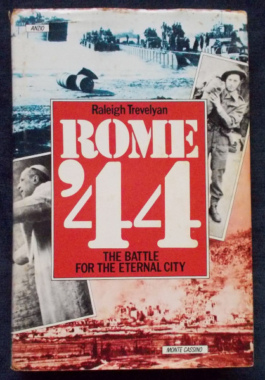 When the author, a wounded veteran of 21, arrived in Rome in 1944, the question most Italians asked him was: 'What took you so long?' What indeed? Were the Allied High Command to blame? Were the generals incompetent? Was the Anzio landing itself a tactical error? In 1956 Raleigh Trevelyan published, as The Fortress, the diaries he had surreptitiously kept in the Anzio trenches and, as a result, made contact with a number of Germans who had been only yards away from him twelve years earlier. Now that statesmen and generals have published their memoirs and official histories of the war have been written, it seems possible at long last to attempt an answer. This is a remarkable book, bringing together the skill and insight of an accomplished historian, the narrative drive of a gifted storyteller, and the rage and terror of a man experiencing at first hand the momentous events from Anzio to Monte Cassino and on to Rome. The reader follows the fate of the 'poor bloody infantry' on both sides of the line; sees a group of Romans adapting to the idea that the Germans are still there; penetrates the secrets of the Vatican; watches the Allied and German generals on the spot fight with their High Commands and hears what Hitler, Churchill, Roosevelt and Stalin thought about it at the time. Illustrated with black and white photographs and even some contemporary cartoons.
When the author, a wounded veteran of 21, arrived in Rome in 1944, the question most Italians asked him was: 'What took you so long?' What indeed? Were the Allied High Command to blame? Were the generals incompetent? Was the Anzio landing itself a tactical error? In 1956 Raleigh Trevelyan published, as The Fortress, the diaries he had surreptitiously kept in the Anzio trenches and, as a result, made contact with a number of Germans who had been only yards away from him twelve years earlier. Now that statesmen and generals have published their memoirs and official histories of the war have been written, it seems possible at long last to attempt an answer. This is a remarkable book, bringing together the skill and insight of an accomplished historian, the narrative drive of a gifted storyteller, and the rage and terror of a man experiencing at first hand the momentous events from Anzio to Monte Cassino and on to Rome. The reader follows the fate of the 'poor bloody infantry' on both sides of the line; sees a group of Romans adapting to the idea that the Germans are still there; penetrates the secrets of the Vatican; watches the Allied and German generals on the spot fight with their High Commands and hears what Hitler, Churchill, Roosevelt and Stalin thought about it at the time. Illustrated with black and white photographs and even some contemporary cartoons. -
 A detailed history of the World War II American B-29 Enola Gay, its crew, and the controversial mission to drop the atomic bomb on Hiroshima, Japan. Painstakingly researched, the story behind the decision to send the Enola Gay to bomb Hiroshima is told through firsthand sources. From diplomatic moves behind the scenes to Japanese actions and the US Army Air Force’s call to action, no detail is left untold. Touching on the early days of the Manhattan Project and the first inkling of an atomic bomb, investigative journalist Gordon Thomas and his writing partner Max Morgan-Witts, take WWII enthusiasts through the training of the crew of the Enola Gay and the challenges faced by pilot Paul Tibbets. Illustrated with black and photographs.
A detailed history of the World War II American B-29 Enola Gay, its crew, and the controversial mission to drop the atomic bomb on Hiroshima, Japan. Painstakingly researched, the story behind the decision to send the Enola Gay to bomb Hiroshima is told through firsthand sources. From diplomatic moves behind the scenes to Japanese actions and the US Army Air Force’s call to action, no detail is left untold. Touching on the early days of the Manhattan Project and the first inkling of an atomic bomb, investigative journalist Gordon Thomas and his writing partner Max Morgan-Witts, take WWII enthusiasts through the training of the crew of the Enola Gay and the challenges faced by pilot Paul Tibbets. Illustrated with black and photographs. -
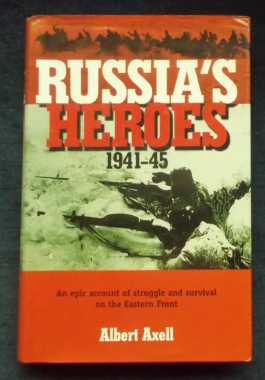 For four years in World War II, out of an unquestioned love for their mother country, the Russian people heroically defended their soil with their blood. Here is the full story of the valor of the sons and daughters, soldiers and villagers, Cossacks and snipers who battled in Moscow and Stalingrad, in the Caucasus and the Arctic, at the Brest fortress and Kursk Bulge. From the account of the aging Russian general who suffered drenchings in ice-cold water rather than collaborate with his Nazi captors to that of the nineteen-year-old private who flung himself on the gun port of a German pillbox so that his comrades could advance, these pages not only chronicle extraordinary selfless acts of heroism but also rectify an astonishing oversight in innumerable histories of World War II. With 16 pages of black-and-white photographs.
For four years in World War II, out of an unquestioned love for their mother country, the Russian people heroically defended their soil with their blood. Here is the full story of the valor of the sons and daughters, soldiers and villagers, Cossacks and snipers who battled in Moscow and Stalingrad, in the Caucasus and the Arctic, at the Brest fortress and Kursk Bulge. From the account of the aging Russian general who suffered drenchings in ice-cold water rather than collaborate with his Nazi captors to that of the nineteen-year-old private who flung himself on the gun port of a German pillbox so that his comrades could advance, these pages not only chronicle extraordinary selfless acts of heroism but also rectify an astonishing oversight in innumerable histories of World War II. With 16 pages of black-and-white photographs. -
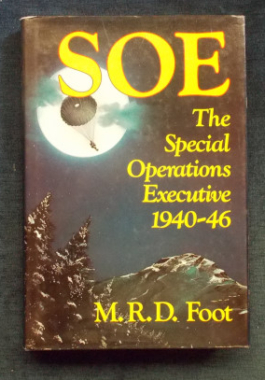
S.O.E. was a small, tough British secret service dirty-tricks department. Its job was to support and stimulate resistance in occupied countries. It was wound up after the war. Its total strength was never more than 10,000 men and 3,200 women, over a third of them secret agents - it exercised vast influence on the war all over the world. This is a readable volume on how S.O.E was created and run, the calibre of the men and women involved, what tools they used and how, when and where they used them, where they did well - and where they did badly. Illustrated with black and white photographs.
-
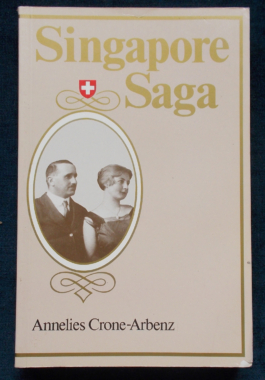 Part One of this autobiography relates the dramatic escape to Australia of three young Swiss sisters during the Japanese invasion of Singapore, then traces their gradual and complete adaption to the Australian way of life by the youngest sister, Annelies. Part Two is the story of their father, the Swiss Consul and their mother Gritli, who remained in Singapore at their posts in dedication to their community. This second part is translated from the recently discovered original diaries of their father, Rudolph Arbenz.
Part One of this autobiography relates the dramatic escape to Australia of three young Swiss sisters during the Japanese invasion of Singapore, then traces their gradual and complete adaption to the Australian way of life by the youngest sister, Annelies. Part Two is the story of their father, the Swiss Consul and their mother Gritli, who remained in Singapore at their posts in dedication to their community. This second part is translated from the recently discovered original diaries of their father, Rudolph Arbenz. -

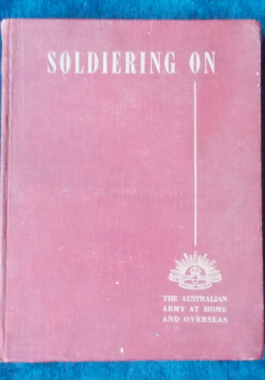
The Australian Army at Home and Overseas, by Some of the Boys and published by the Australian War Memorial, Canberra, 1942. Chapters include: Star Over Bethlehem; Diggers in Britain; Midnight Messiah; Purple's Pup; Arab Justice; Digger v. Doughboy and so much more. Our boys' impressions of Christmas in a cold climate and local customs as well as the American servicemen and women here in Australia. The colour plates, interestingly, are pasted in. Tales, jokes, sketches, cartoons and on-the-spot experiences a-plenty. Illustrated in colour and black and white. A treasure mine of information.
-

 The Australian Army at Home and Overseas, by Some of the Boys and published by the Australian War Memorial, Canberra, 1942. Chapters include: Star Over Bethlehem; Diggers in Britain; Midnight Messiah; Purple's Pup; Arab Justice; Digger v. Doughboy and so much more. Our boys' impressions of Christmas in a cold climate and local customs as well as the American servicemen and women here in Australia. The colour plates, interestingly, are pasted in. Tales, jokes, sketches, cartoons and on-the-spot experiences a-plenty. Illustrated in colour and black and white. A treasure mine of information.
The Australian Army at Home and Overseas, by Some of the Boys and published by the Australian War Memorial, Canberra, 1942. Chapters include: Star Over Bethlehem; Diggers in Britain; Midnight Messiah; Purple's Pup; Arab Justice; Digger v. Doughboy and so much more. Our boys' impressions of Christmas in a cold climate and local customs as well as the American servicemen and women here in Australia. The colour plates, interestingly, are pasted in. Tales, jokes, sketches, cartoons and on-the-spot experiences a-plenty. Illustrated in colour and black and white. A treasure mine of information.




